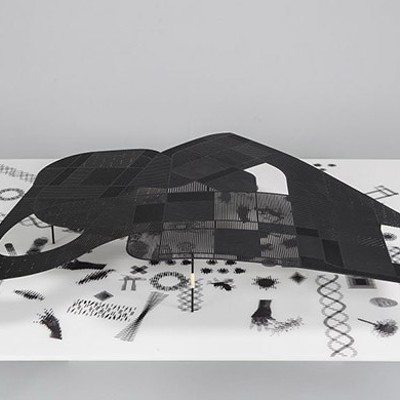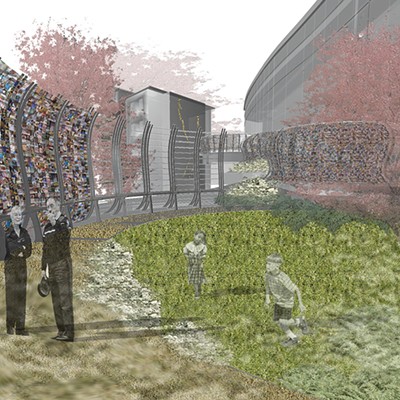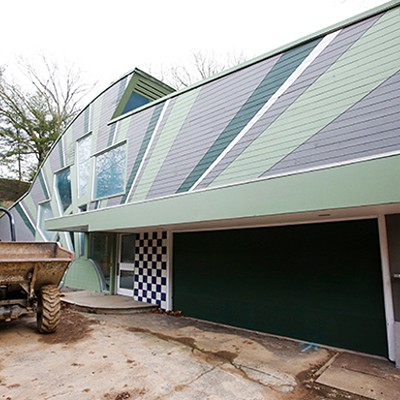Any time there is a spurt of commercial activity in an historic neighborhood, a debate emerges as to how much of the old fabric is worth saving and how modern construction can be integrated. Invariably in Pittsburgh, too many historic structures get torn down, too many new structures look like dumb copies of old ones, and plenty of new development has no sympathy for neighborhoods or people whatsoever. On Sun. Oct. 9, the annual Lawrenceville House Tour shows that the historic and the modern need not be in conflict with each other.
Architectural historian Carol Peterson has researched the histories of hundreds of Pittsburgh houses and has participated in the histories of several of them herself. She has owned at one time or another seven different houses in Lawrenceville. A few she has sold, a few she retains as rental properties. Two of them will be part of Sunday's tour.
In a grouping of four rowhouses on 43rd Street, Peterson currently owns two adjacent ones that are mirror images of each other. Both were built in 1889. Three bays wide and three stories tall with high ceilings, these were typical, Peterson says, of middle-class housing of the time, complete with a back stair for servants, a more elaborately ornate main front stair, and eight rooms overall. "What's interesting historically," says Peterson, "is that in 1890, a streetcar line was built to Friendship, where houses had yards. That neighborhood took off at the expense of Lawrenceville, and these houses became obsolete."
By 1900, she says, most of Lawrenceville's larger houses had been converted to apartments. Almost invariably, such status would bring about years of deferred maintenance and unsympathetic alterations. Her current residence has been the focus of a fairly long-term rehabilitation to convert it from three apartments, remove dropped ceilings, install ductwork and fix roofs. She especially prizes the restored woodwork. "For an architectural historian," she allows, "ideally everything is original." This makes for a particularly interesting comparison, because her house next door is only at the beginning of its renovation. Though it's not as dilapidated as some she has restored, Peterson says that the house -- with the dropped ceilings, wood paneling and shag carpeting so typical of the 1970s -- "needs everything." Getting it closer to its 1889 condition (with some important upgrades) will actually make it more up-to-date, in terms of taste in the current market.
Only a couple of blocks away, Claudia Brink's renovated loft, the second floor of a former retail storage space, is an exercise in creating a new history rather than recapturing a lost one. No researcher has yet uncovered the past lives of a space that was previously without historical details or apparent potential. But by opening new windows and putting in up-to-date utilities, developers Lee Gross and Bill Barron converted it into an open, one-bedroom loft where crisp plaster finishes contrast nicely with open trusses and a raw ceiling for a decidedly modern esthetic. Brink, a longtime Los Angeles resident with a growing collection of Modern furniture and art, observed the space under construction and liked what she saw. "I'm very much a minimalist," she explains. Her living arrangement is very tidy and uncluttered, and it is also a showcase of furniture by Eero Saarinen and LeCorbusier, Eileen Gray and Gustav Stickley.
Still, "they're all comfortable pieces," Brink says. Her views are also informed by writers Jane Jacobs and Christopher Alexander, who have different ways of saying that old and new architecture can coexist splendidly if a respect for human (and not automobile) comfort underlies design, whether at the scale of a seat or a city. So it's possible to be a modernist who is sympathetic to an historic neighborhood. "I actually wanted to share what a post-World War II loft would look like. I thought that would add to the diversity."
In fact, Brink will add further diversity to Lawrenceville when she builds a new modern house on an empty lot sometime in the next few years. The current space "is testing how I'm going to live." These approaches contrast in style, but really they are united by the sense of a distinct personal vision and commitment that incorporates but also transcends dollars and cents. Says Brink, "There's a difference between liking the location and being drawn to the neighborhood."


















